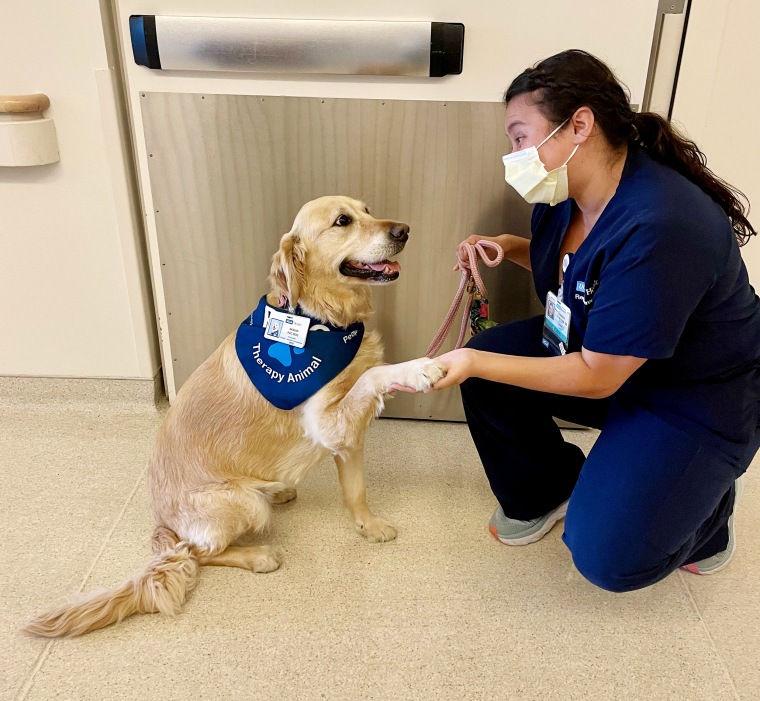The participants wore the brainwave-detecting headsets during the activities, then completed surveys after each one to describe how they felt emotionally.
The researchers found that participants’ alpha brain waves, which indicate stability and relaxation, became stronger when they played with Aro using squeaky toys and when they took her for a walk on a park trail. Those results suggested people were experiencing an increased state of rest and relaxation.
Beta brain waves, which are associated with attention and concentration, became stronger when participants played with Aro, brushed her or gave her a gentle massage — a sign that people’s concentration improved without an increase in stress.
After all eight activities, the participants reported feeling less stressed, fatigued and depressed.
In particular, massaging Aro, feeding her treats and hugging her improved people’s moods, according to the surveys. Participants also reported feeling comfortable while walking Aro and relaxed while massaging her.
“This study demonstrated that specific dog activities could activate stronger relaxation, emotional stability, attention, concentration, and creativity by facilitating increased brain activity,” Yoo said. “In addition, interactions with dogs could decrease stress and induce positive emotional responses.”
Some past research has suggested that dogs could help ease symptoms of depression or post-traumatic stress disorder, but it remains unclear how effective that intervention may be.
A 2022 study found that veterans and first responders who had a service dog experienced fewer PTSD symptoms than those without one — though having a dog as a pet was less effective.
Similarly, a 2020 clinical trial found that service dogs were slightly better at improving PTSD symptoms among veterans compared to emotional support dogs, which weren’t trained to perform tasks like turning on lights or retrieving objects. However, both types of dogs improved PTSD symptoms to some extent.

Research also suggests that, for this type of “pet therapy” to have a benefit, people need to like animals in the first place.
“I was actually traumatized at a very young age by a dog. I never quite warmed up to them, so I’m not sure I would necessarily find the same comfort level,” said Kathryn Magruder, a psychiatry professor at the Medical University of South Carolina and an author of the 2020 trial.
Jennifer Dobkin manages an animal therapy program for medical patients and staff called UCLA People-Animal Connection, and said she has seen how interacting with dogs helps people concentrate and relax.
“If it’s a staff member that’s been stressed and having a bad day, you can physically see their posture relaxes. They smile. They’ll say things to us like, ‘You have no idea how much I needed this,'” she said.
Dobkin said she recently brought her own dog, Toto, a terrier mix, to visit a family in the hospital whose father was dying. Amid the stress and sadness, the family was able to remove themselves from that headspace and “focus on something that requires absolutely nothing from them: petting a dog,” she said.
Children at Stuart House — a center in Santa Monica, California, that provides medical treatment and forensic services for sexually abused youth — also prefer to pet a Golden Retriever/Labrador mix named Norse while they’re talking to investigators, Dobkin said.
“Our dogs get called to those situations to help the kids cope with talking about a really, really stressful situation that happened to them,” she said. “I think it does help them concentrate. It just provides a sense of comfort.”






